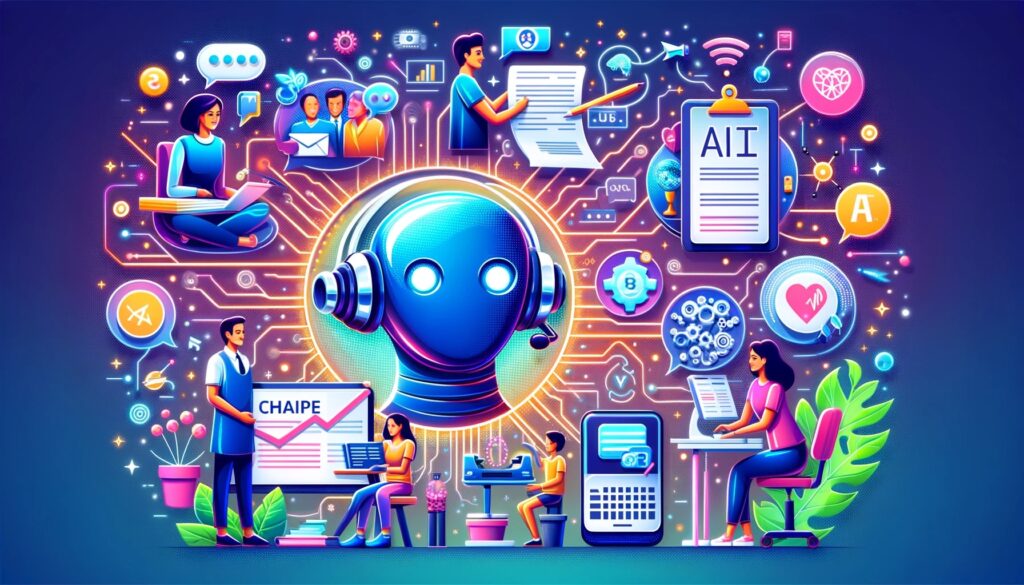In the rapidly evolving landscape of technology, artificial intelligence (AI) stands at the forefront of innovation, reshaping how we interact with machines and, more importantly, with each other. Among the myriad of AI advancements, OpenAI’s ChatGPT has emerged as a groundbreaking tool, revolutionizing communication and information accessibility. But what exactly is ChatGPT, and how is it transforming our world? Let’s delve into the fascinating world of ChatGPT and explore its significance, applications, and potential.
Understanding ChatGPT
ChatGPT is an AI language model developed by OpenAI, based on the GPT (Generative Pre-trained Transformer) architecture. It is designed to understand and generate human-like text, making it capable of engaging in conversations, answering questions, and even creating content. The “GPT” in ChatGPT stands for Generative Pre-trained Transformer, a type of neural network architecture that excels in understanding and generating natural language.
The journey of GPT began with its first iteration, but it was the subsequent versions, particularly GPT-3 and the latest GPT-4, that showcased the true potential of this technology. GPT-3, with its 175 billion parameters, demonstrated an unprecedented ability to generate coherent and contextually relevant text, setting the stage for ChatGPT to become a versatile tool in various fields.

The Magic Behind ChatGPT
What makes ChatGPT remarkable is its ability to comprehend and generate text that is not only contextually accurate but also nuanced and human-like. This capability is achieved through a process called “pre-training” and “fine-tuning.” During pre-training, the model is fed vast amounts of text data from the internet, learning grammar, facts, and even some reasoning abilities. Fine-tuning involves training the model on a narrower dataset, often with human reviewers guiding the process to ensure the generated text aligns with human sensibilities and ethical guidelines.
Transforming Communication
ChatGPT has found its way into numerous applications, fundamentally altering how we communicate and access information. Here are some notable examples:
- Customer Support: Businesses are leveraging ChatGPT to provide efficient and round-the-clock customer support. The AI can handle a wide range of queries, from troubleshooting technical issues to providing product information, enhancing customer satisfaction.
- Content Creation: Writers and marketers are using ChatGPT to generate content ideas, draft articles, and even write complete pieces. Its ability to understand context and generate creative text makes it an invaluable tool for content creators.
- Education: ChatGPT is being integrated into educational platforms to assist students with their queries, provide explanations, and even help with language learning. Its interactive nature makes learning more engaging and accessible.
- Healthcare: In the healthcare sector, ChatGPT is aiding in providing medical information, scheduling appointments, and even offering mental health support through conversational agents, improving accessibility to healthcare services.
Ethical Considerations
While the capabilities of ChatGPT are impressive, they also raise important ethical considerations. The potential for misuse, such as generating misleading information or deepfakes, is a significant concern. OpenAI has implemented measures to mitigate these risks, including guidelines for responsible use, content filtering, and ongoing research to improve the model’s ethical behavior.
Moreover, the human-AI interaction paradigm brings forward questions about data privacy, job displacement, and the need for transparency in AI-driven communications. Addressing these challenges requires collaboration between AI developers, policymakers, and society at large.
The Future of ChatGPT
The future of ChatGPT and similar AI technologies is promising. As these models continue to evolve, we can expect even more sophisticated interactions and broader applications. Imagine virtual assistants that can provide personalized advice, AI tutors that can adapt to individual learning styles, and conversational agents that can understand and respond to human emotions with empathy.
In conclusion, ChatGPT represents a significant leap in AI-driven communication. Its ability to understand and generate human-like text opens up a world of possibilities, transforming industries and enhancing our daily lives. As we navigate the ethical and societal implications, embracing this technology with responsibility and foresight will ensure that ChatGPT remains a force for good in our increasingly digital world.
